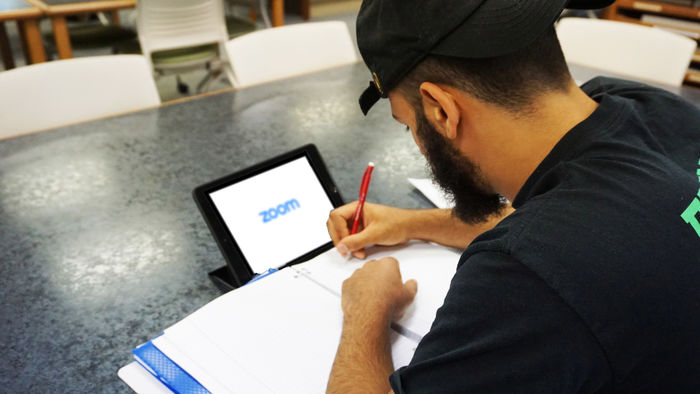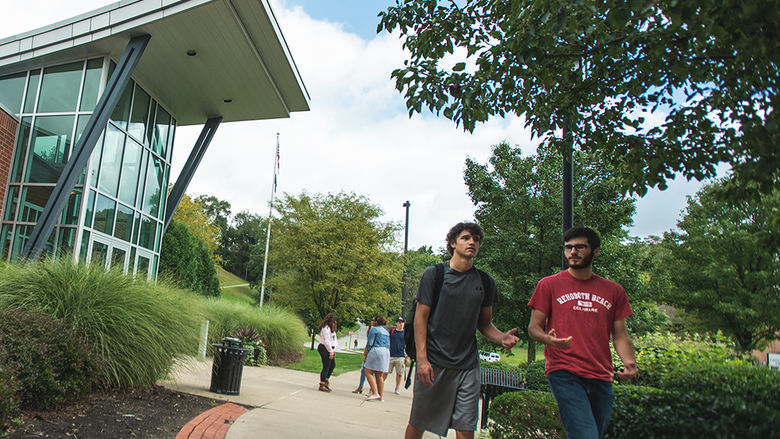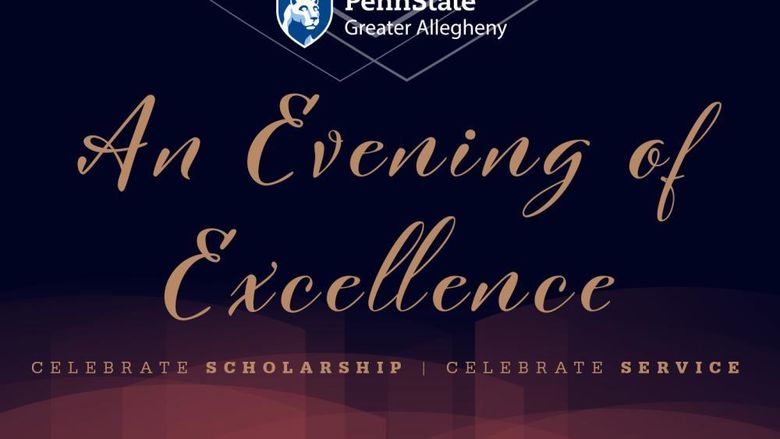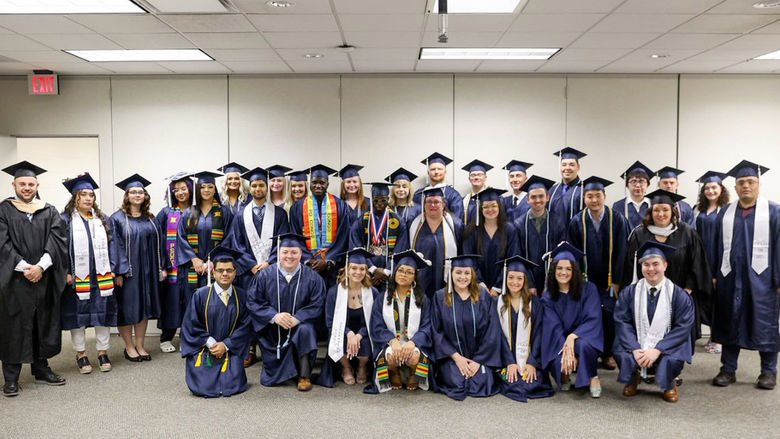
Penn State Greater Allegheny Mathematics Professor Kuei-Nuan Lin is holding a remote learning session via Zoom. Lin utilizes her iPad as a whiteboard to show different math equations to students.
MCKEESPORT, Pa. — When Penn State Greater Allegheny launched its signature Digital Fluency Project in Fall 2018, it did so knowing the project would be a game changer for its students. Through workshops and courses, students would learn to use digital tools to communicate and solve problems. Fast forward to Spring 2020, and the Digital Fluency project is still a game changer, this time in the face of the COVID-19 pandemic.
When universities across the country made the decision to move to remote teaching and learning for the spring semester, many higher education leaders asked how students without computers would access their classes and course materials. Greater Allegheny campus leaders did not ask that question because the Digital Fluency Project had already provided the answer.
As part of the project, each student, faculty and staff member receives an iPad and Logitech crayon. Campus leaders knew this common computing tool would help lessen the challenges of moving to the remote teaching and learning period.
Campus leaders also knew that all the many workshops were conducted in partnership with Apple Education, and the campus faculty and IT staff gave individuals the technology skills to flourish in this new environment.
“Penn State Greater Allegheny serves a very diverse student body,” said Chancellor and Chief Academic Officer Jacqueline Edmondson. “Over 54% of our students receive a Pell Grant. Some of our families do not necessarily have the resources to purchase a personal computing device. The fact that we can place a device in the hands of every student alleviates one concern they have in meeting college expenses. In our current remote learning environment, we hope to alleviate an access and equity concern.Our students are keeping up with their work, and engaging in learning, because of this project.”
"Our students are keeping up with their work, and engaging in learning, because of this project."
— Jacqueline Edmondson,
chancellor and chief academic officer, Penn State Greater Allegheny
Instruction continues
On March 16, the first day of the remote learning period, Michael Vicaro, associate professor of communications, found himself at home, rather than on campus. As the start time for CAS 426W – Communications Ethics approached, Vicaro wasn’t sure what to expect. “This is a discussion based class and we had cultivated a lot of close connections before break, discussing challenging personal experiences,” Vicaro shared.
One by one, Vicaro’s students joined a Zoom classroom, and attendance was strong. “I was glad to see the students connecting and engaging through Zoom,” said Vicaro. “Several expressed ‘relief’ that we had created an opportunity to talk about COVID-19, quarantine, and related experiences. I think that meeting, and those that have followed, have given some students an outlet and way of connecting amidst the isolation.”
Vicaro recognizes that the iPads address a larger issue colleges and universities face during this remote learning period. “I am certain that without the iPads, this period of remote teaching would more deeply divide student outcomes along class/economic lines,” said Vicaro. “The iPads are one way Greater Allegheny has pushed back against that tendency and helped to even the playing field a bit.”
When the remote learning period was announced, Kuei-Nuan Lin, assistant professor of mathematics, knew that she could continue teaching in an interactive way.
“I use inquiry-based learning and a flipped classroom when I teach math [Math 141, Math 250, Math 251],” said Lin. “When we are on campus, students use whiteboards as we work through problems. In this new setting, with the iPad, Jamboard, and Zoom, I don’t have to change my approach. I could not imagine how my life, or the students’ learning, would be with without the iPad.”
“The foresight to bring to Greater Allegheny the Digital Fluency Project, and iPads for each student has made educational continuity and remote social interaction possible in this unprecedented time.”
— Lori Ballog, Penn State alumna and parent
Connecting Beyond The Classroom
The remote learning period not only changed the way faculty and students engaged in classes, but also impacted the delivery of support services in areas such as advising and tutoring. The John H. Gruskin Learning Center staff quickly established Zoom tutoring rooms and published the subjects, times and links to those meeting rooms. Siobhan Brooks, director of the center, indicated that students were using her services in rates similar to her on-campus services.
Koran Fleming, a junior business major from Pittsburgh, is one student in contact with Brooks and her staff.
“The iPad is so useful and I am so glad I have it,” expressed Fleming. “Not only am I using it to participate in my classes, but I am also connecting to our Learning Center, and participating in the virtual tutoring sessions they are offering for students.”
Family members also recognize how important the project is, especially at this time. Lori Ballog, a Penn State alumna and mother of current Greater Allegheny sophomore Lorin Ballog, wrote to Edmondson to share how her daughter was making the transition to the remote learning period.
“The one good constant in this daily changing world has been the remote learning success Lorin is having with all of her classes,” shared Lori Ballog. “The foresight to bring to Greater Allegheny the Digital Fluency Project, and iPads for each student, has made educational continuity and remote social interaction possible in this unprecedented time.”
The Digital Fluency Project is supported through generous donations from friends of the campus, including Jim and Megan Minarik. The Minariks have established a Digital Fluency Challenge Grant, donating $50,000 to the project. When matched by generous gifts from alumni, donors, corporations and foundations, the $100,000 will help students not only develop vital digital skills, but keep them connected to their peers, their faculty and their course work during this unprecedented time. To contribute to the Challenge Grant visit raise.psu.edu/gadigitalfluency.





